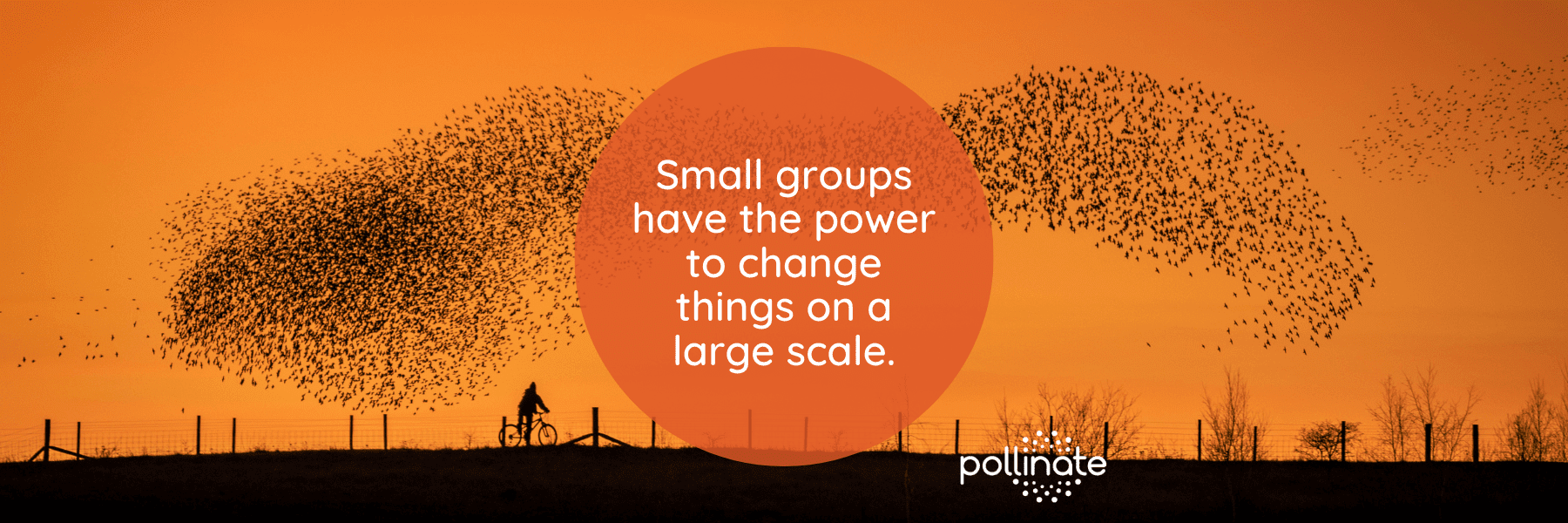
Agile teams with the right mix of members are the key to productivity and exceptional employee experiences.
One year after the COVID pandemic disrupted our lives, organizations everywhere continue to struggle to find new, effective ways of getting work done.
CEOs worry about fragmented teams, slipping productivity, eroding culture and the impact on employee wellbeing due to remote and hybrid work arrangements.
The pressure is on to redesign work to help organizations emerge stronger and more resilient than before, providing the flexibility employees want while avoiding potential pitfalls of distributed teams working asynchronously.
Organizations need new strategies to tap into and galvanize their people – their biggest asset – to thrive in this ever-evolving new work reality.
A recent study of 7,250 employees in 12 countries revealed that while employees overwhelmingly want to continue working remotely or in a hybrid manner, 36 per cent feel isolated and out of touch with colleagues.
Similarly, a PwC survey of chief human resources officers identified the biggest business challenges as: employee anxiety and burnout (51%); a lack of tools to accelerate collaboration, creativity and coaching (47%); and weakened culture in a virtual world (41%).
Gartner for HR has weighed in with a report that observes: “Work design, focused for years on efficiency, has left many organizations with rigid structures, workflows, role design and networks that don’t meet today’s needs or flex with fast-changing conditions. Employees suffer the effects in various forms of work ‘friction.’”
Organizations need new strategies to tap into and galvanize their people – their biggest asset – to thrive in this ever-evolving new work reality.
So how do you get the most from the people who power your organization? How do you leverage and cross-pollinate their intrinsic knowledge, ideas and energy, without burning them out and losing traction?
Not more connections; better connections!
More zoom meetings and constant micro-management are not the answer. It’s not about more connections – more oversight, more checking, more visibility – it’s about making the right connections, strategic connections, possibly fewer connections, to create a bigger impact.
At Pollinate, we believe the solution lies in the power of agile small groups of people who are strategically matched, primed for success and focused on specific objectives.
A recent webinar on the future of work trends with Soraya Darabi, Co-founder and General Partner TMV, suggested the idea of creating “pods” of people at work to combat fragmentation of effort and purpose. Darabi recommended putting together different groups of employees that are not used to working together to build culture and promote connection and learning.
Our work at Pollinate harnesses network theory – specifically small networks or groups – to connect, cross-pollinate and change things on a large scale. In small groups ideas travel and grow rapidly, and can have an outsized impact. As Mark Buchanan explains in his book Nexus: Small Worlds and the Groundbreaking Theory of Networks:
“The small-world mystery is indeed more than a mere curiosity. It reveals an underlying dynamic of interconnectedness that expresses itself indelibly in who we are, how we think, and how we behave.”
Networks aren’t random – healthy networks grow according to patterns based on scientific and mathematical principles. The positive network effect is the key to high-performance teams, whether the individuals are working remotely, in-person or in a blended manner. This is the essence of strategic teaming, an approach that can help organizations respond to challenges with agility to deliver results.
Strategic teaming
Strategic teaming brings people together across organizations, networks, industries, sectors and ecosystems to achieve well defined, specific objectives.
Strategic teaming is like a Swiss army knife with many applications to effect change. It can integrate people across organizational silos or following a merger or acquisition, contribute to the success of a joint venture, and build a positive, diverse work culture.
Strategic teaming involves connecting the right people, at the right time and in the right way to:
- increase productivity
- cross-pollinate knowledge and close skills gaps
- develop and retain talent
- build culture, diversity and engagement
- spark and develop new ideas and
- support wellbeing.
It’s all about the match
The secret to high-performance teams is putting the right people together at the right time in the right way.
In The Secrets of Great Teamwork in Harvard Business Review, Martine Haas and Mark Mortensen cite enabling conditions for effective teams, including strong structure:
“Teams also need the right mix and number of members… High-performing teams include members with a balance of skills. Every individual doesn’t have to possess superlative technical and social skills, but the team overall needs a healthy dose of both. Diversity in knowledge, views, and perspectives, as well as in age, gender, and race, can help teams be more creative and avoid groupthink.”
To facilitate high-performance teams, Pollinate has used Cross-Pollinate AI™ technology – proprietary algorithms and our validated Knowledge Transfer Index (KTI) psychometric assessment – to successfully match pairs and groups for more than 12 years.
The KTI assessment provides insights on seven elements of style, preference and ability that affect how people learn, collaborate and work together – in person and virtually. The score from the assessment is combined with several other factors, including individual goals, interests, shared activities and other program-specific objectives to arrive at the optimal team structure.
Our experience with matching hundreds of pairs and groups within organizations worldwide confirms that high-performance teams have a healthy balance of characteristics: the individuals are similar enough to quickly understand each other, but have just the right amount of difference to spark new thinking and learn from each other’s strengths for quick traction and results.
See our case study on post-merger leadership integration for MUFG in partnership with JMReid Group.




